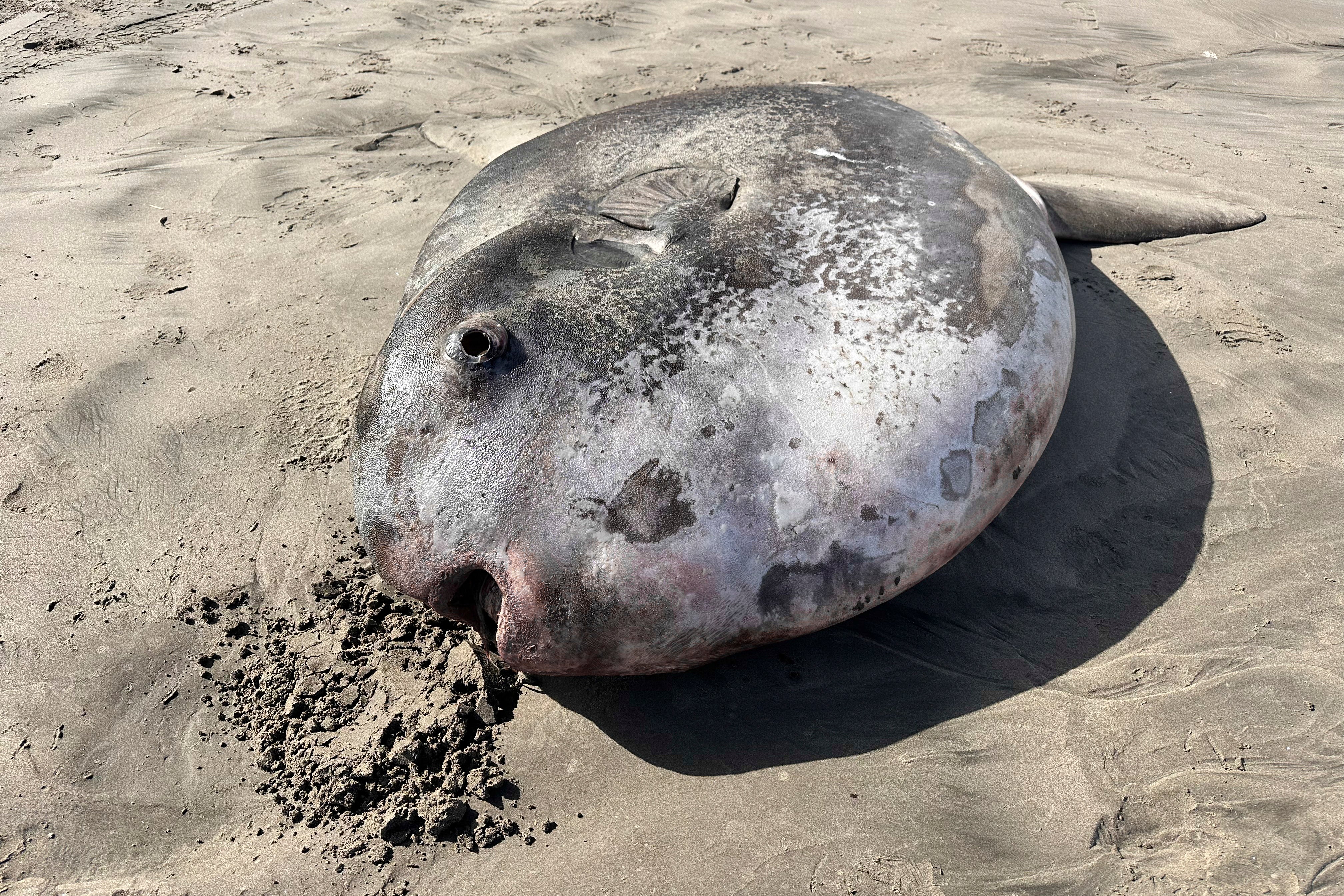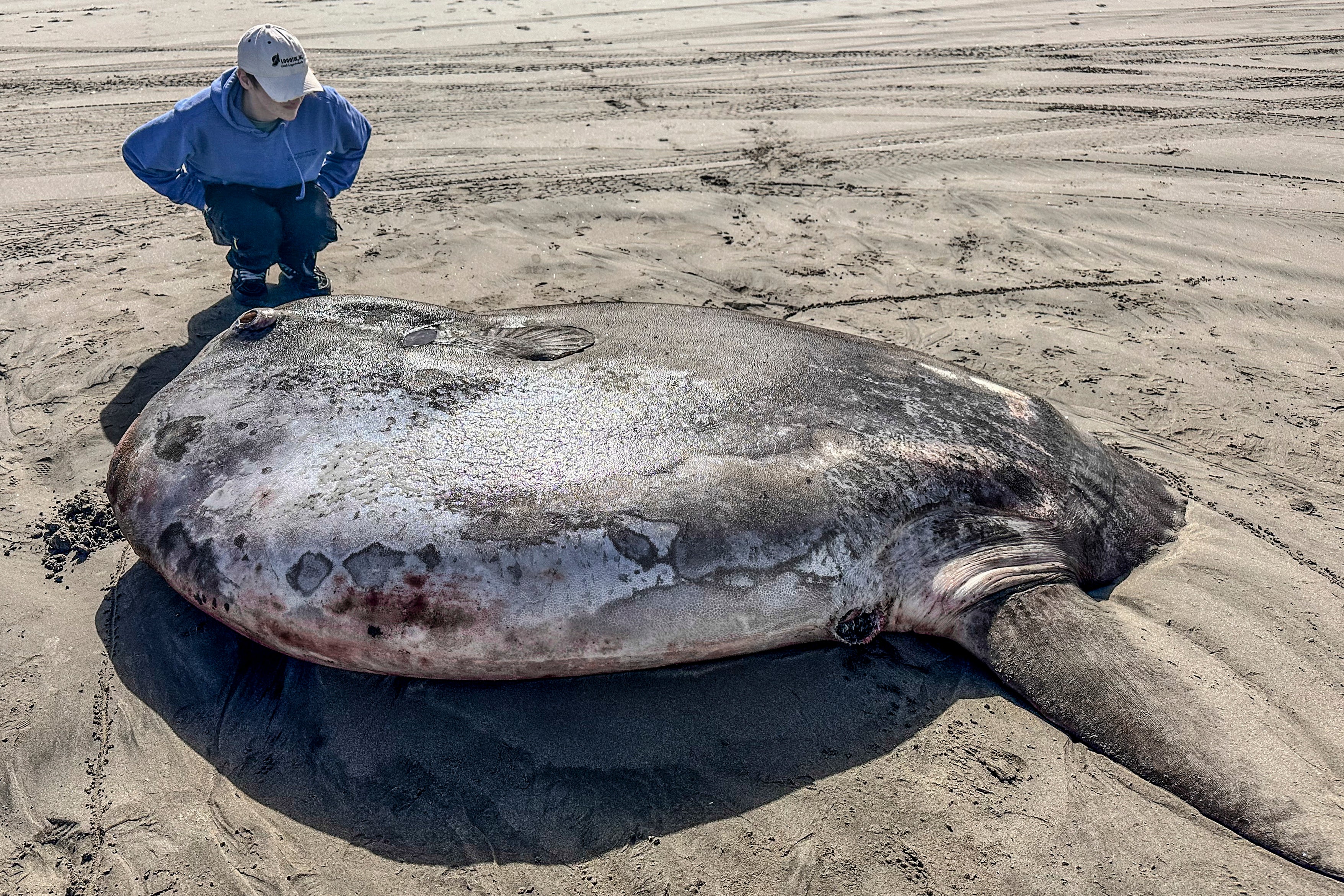A huge rare fish, which may be the largest ever recorded, has washed up on the northern Oregon coast, attracting crowds of curious beachgoers intrigued by the unusual sight.
This massive creature is believed to only live in temperate waters in the southern hemisphere.
The 7.3-foot (2.2-meter) deceptive sunfish first appeared on Gearhart Beach Monday, the Seaside Aquarium said in a news release.
The deceiver is larger and more slippery than other species of sunfish, it can weigh up to 2,000 kg. The fish grows quickly, gaining up to 800 pounds in 15 months.
It was still on the beach Friday and could remain there for weeks, the aquarium said, because it is difficult for scavengers to pierce its tough skin.

Photos provided by the aquarium showed a flat, round, gray fish lying on its side in the sand. Photos of a person kneeling nearby and another of a van parked nearby gave an idea of its large scale and size.
The stir it created on social media prompted a New Zealand researcher who studied sunfish to contact the aquarium. After examining photographs of the fish, Marianne Nyegaard was able to confirm that it was indeed a deceptive sunfish – rarer than the more common ocean sunfish – and said she thought it might be of the largest fish of its type ever sampled, according to the aquarium.

In research published in 2017, Nyegaard discovered through genetic sampling and observation that the deceptive sunfish, or Mola tecta, was a different species from the ocean sunfish, Mola mola. “Tecta” in Latin means hidden or disguised, referring to a new species that was hiding in plain sight.
In previous years, the deceptive sunfish has washed up on the California coast. It also washed up more recently in California and Alaska, calling into question the theory that it only lives in the Southern Hemisphere, the aquarium said. It’s also likely that the fish was washed up in other parts of the Pacific Northwest but was confused with the more common ocean sunfish at the time, the aquarium added.

